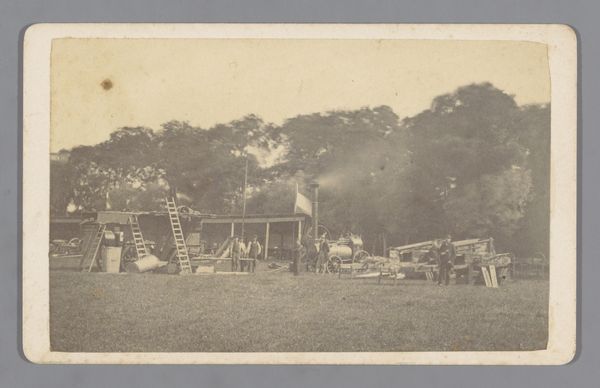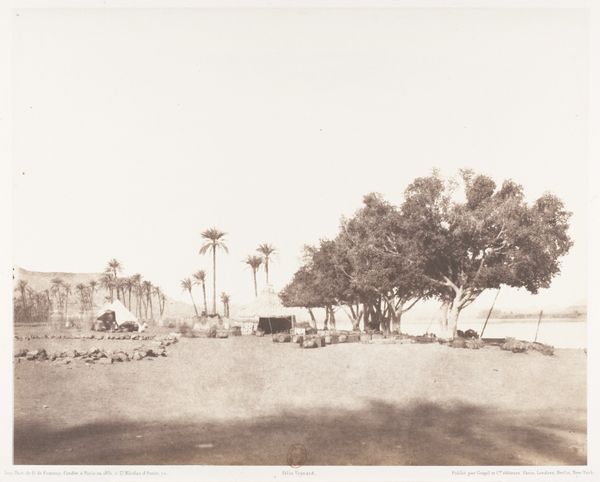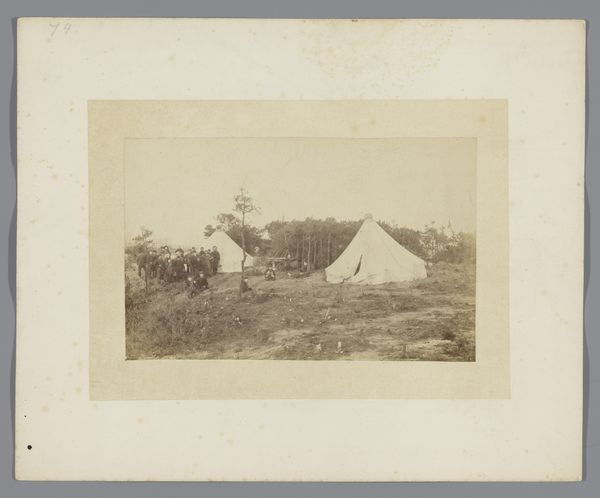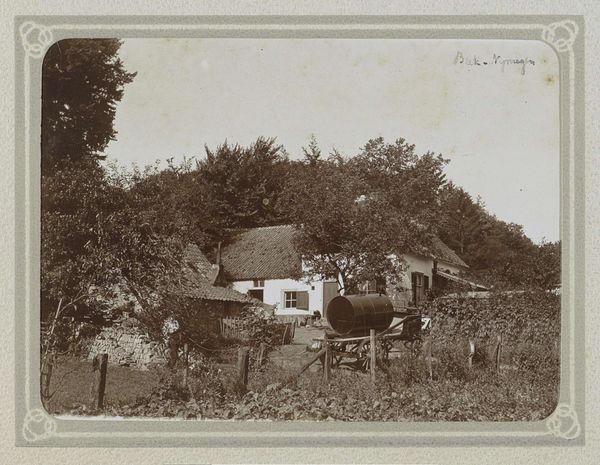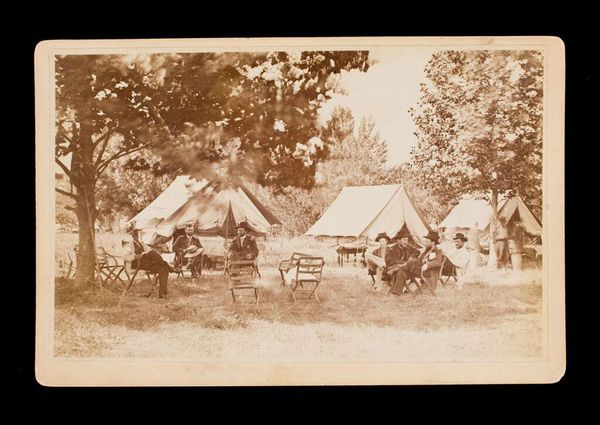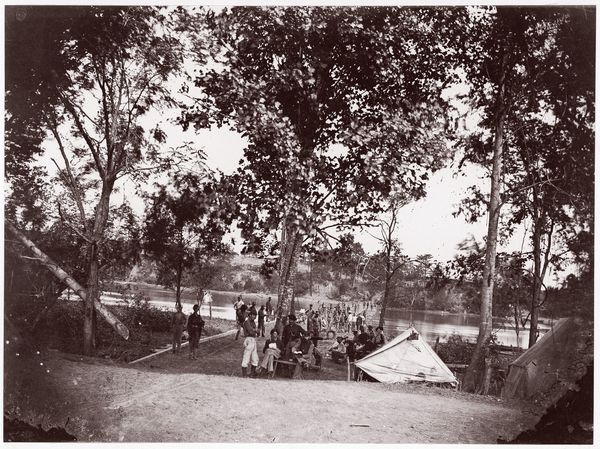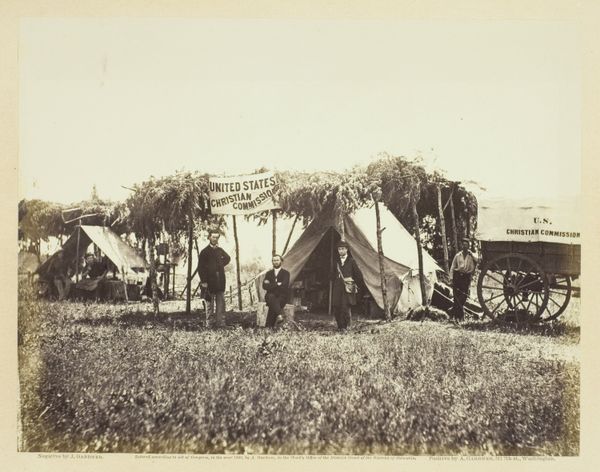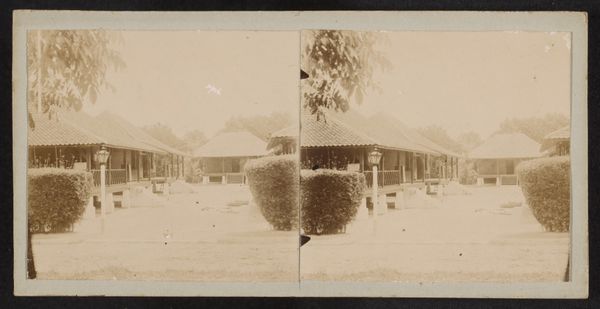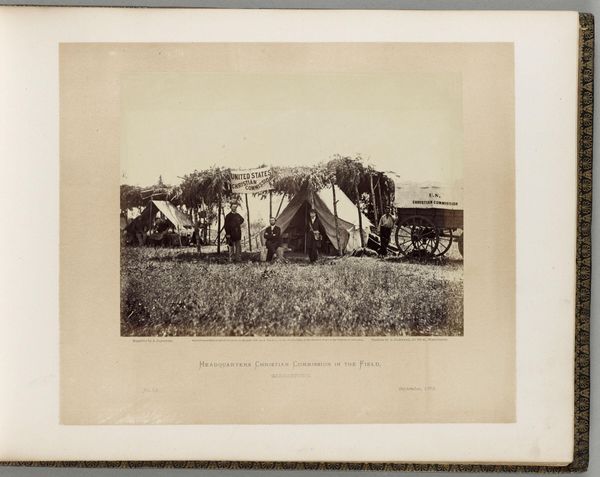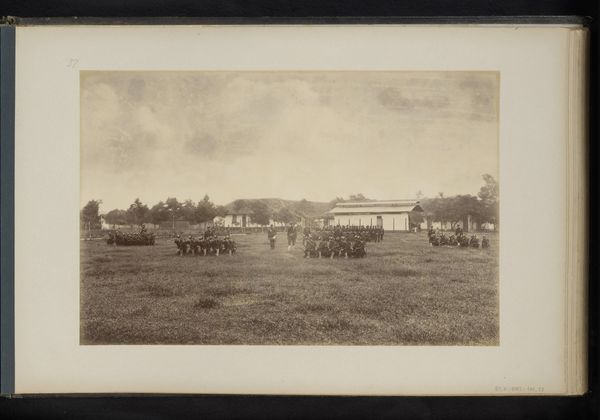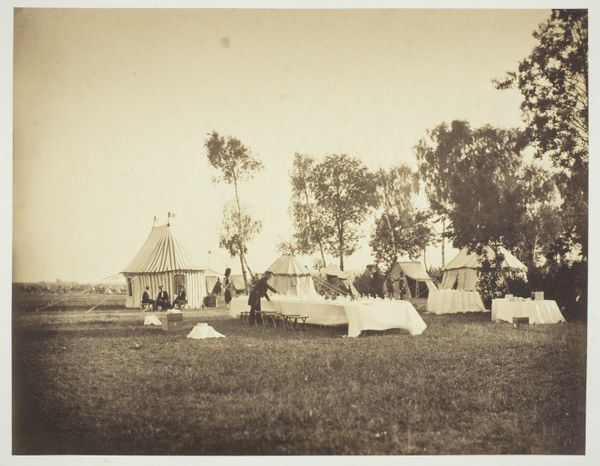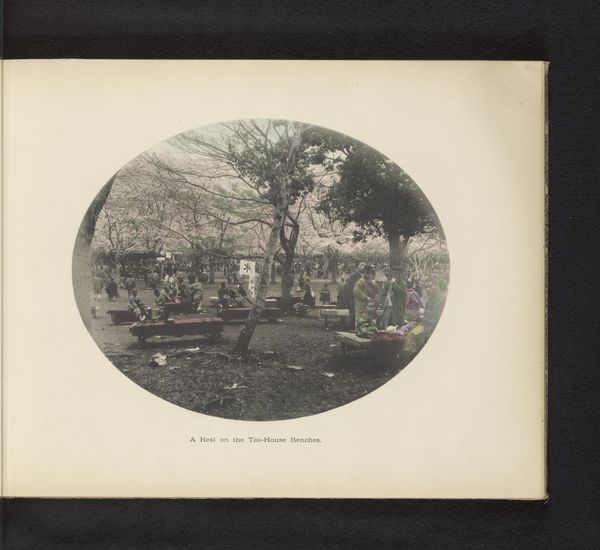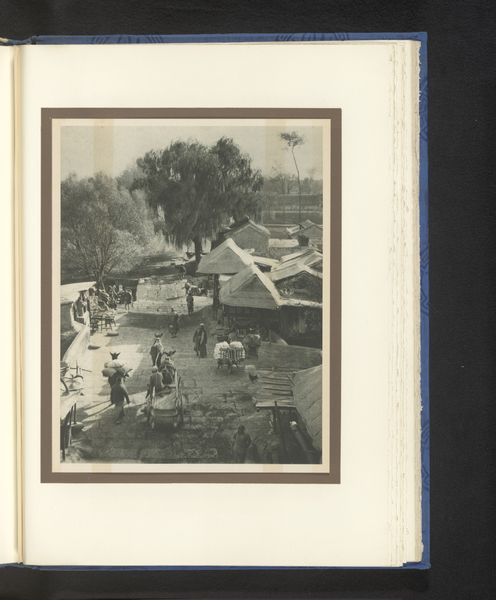
Gezicht op een landbouwtentoonstelling in Middelburg 1862 - 1870
0:00
0:00
print, photography, gelatin-silver-print
# print
#
landscape
#
photography
#
gelatin-silver-print
#
realism
Dimensions: height 57 mm, width 90 mm, height 62 mm, width 101 mm
Copyright: Rijks Museum: Open Domain
Curator: The gelatin-silver print before us, captured sometime between 1862 and 1870, is titled "Gezicht op een landbouwtentoonstelling in Middelburg," which translates to "View of an Agricultural Exhibition in Middelburg." It's an outdoor photograph by Jan Wendel Gerstenhauer Zimmerman, currently residing here at the Rijksmuseum. Editor: My first impression is one of almost wistful silence. There's something incredibly still about it, despite depicting machinery usually associated with industry and commotion. The limited grayscale really highlights the forms and the overall quiet tone. Curator: That stillness, I think, arises from its purpose. Agricultural exhibitions were vital for disseminating new technologies and approaches to farming. This print doesn't aim to capture the activity itself, but the ordered display—the idealized version of agricultural progress. Editor: Interesting. It seems as if the machinery carries an aspirational meaning. The machines are symbols promising innovation and improved efficiency in agriculture, yes? The objects representing larger movements of agrarian improvement and rural industrialization during the mid-19th century. Curator: Precisely. And these exhibitions became important public stages where emerging agricultural technologies reshaped existing hierarchies and local understandings of the future of agricultural work. This particular photographic approach, though, is not as concerned with socio-political issues as with how to picture modern farm work. Editor: It makes me think about the human element though. Where are the people? The labor force operating this equipment is strikingly absent. Is it intentional, emphasizing the *idea* of progress over its practical, human reality? It does feel more like an archive then – like documenting tools or items and less like observing a moment or experience. Curator: An astute observation! Their absence points to the core ethos inherent in realism. What truly matters here is a truthful and unfiltered representation of things; including labor and related socio-economic questions is of secondary significance. Editor: So the emphasis really shifts from agriculture as labor, toward agriculture as a symbolic enterprise, full of potential? Curator: Exactly! It’s a tableau of aspirations—and an early record of how we began to envision our relationship with the land through technology. The gelatin-silver method lent a remarkable crispness. We are invited to marvel at that potential even today. Editor: I'll definitely carry that perspective with me now. It’s not just about looking *at* machines, but seeing them as active cultural symbols. Curator: I appreciate you sharing your impressions. The ability of images to convey culture's evolution and continuity through visual artifacts such as technological advances keeps us connected to historical awareness and cultural self-understanding.
Comments
No comments
Be the first to comment and join the conversation on the ultimate creative platform.
